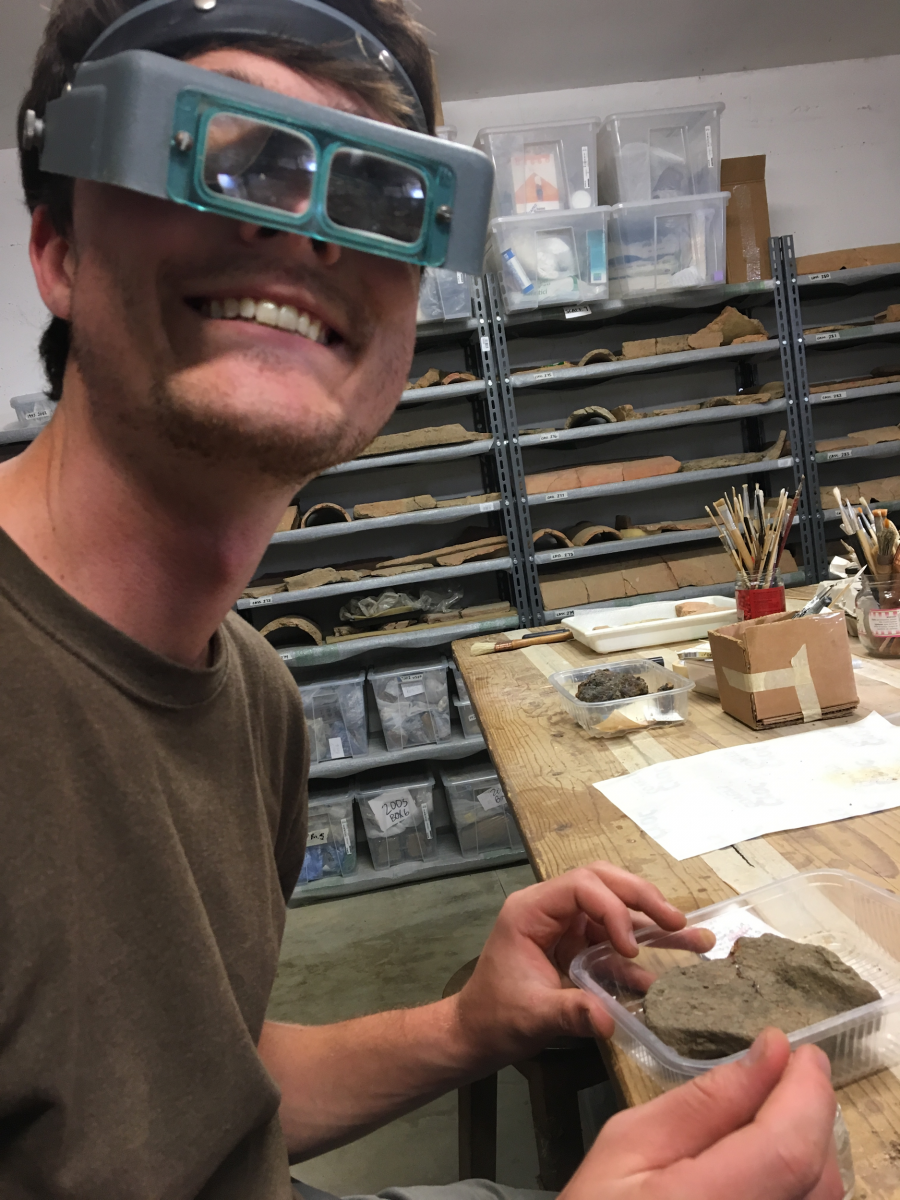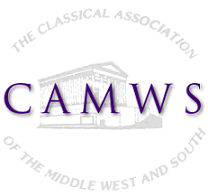Steven Mondloch (University of Massachusetts Amherst)
2019 Excavation/Fieldwork Award Recipient
This past summer, I had the extremely good fortune of receiving an award from CAMWS to supplement my participation in the Poggio Civitate archaeological project in Murlo, Italy. While there, I helped archaeologists excavate, document, and conserve artifacts from several separate phases of Etruscan occupation on the hill and learned many things about what the stratigraphic and artifactual data might tell us about this settlement.

Don’t let anyone tell you that archaeology isn’t hard work! Every morning began with waking up well before the sun to trek through the Tuscan countryside and up a hill to the site of the excavation. In sometimes intense heat, we excavators used pickaxes, shovels, and wheelbarrows to remove earth that was placed over previously excavated trenches in order to preserve the site until excavation could be continued the following season-- a process called “de-backfilling”. While it sure was tough work, the personal relationships formed with the other excavators while we worked away was something I’ll cherish in my memory for years to come.
After we removed the backfilled earth and sent some new trenches, it was off to the races! While I rotated where on the site I excavated every week, most of my time was spent in newly dug trenches which our archaeologists posited could reveal evidence of non-elite housing. In these trenches, we found many samples of clay tile and pottery, terracotta, slag from metal working, worked animal bone, and other remnants from a large workshop just uphill which had deposited some of these things into this part of the site due to a sort of landslip.
My biggest personal find of the excavation was a terracotta big-cat head which was most likely used as an ornamental display in an aristocratic manor. The feeling of reaching into the ground and picking up an intact artifact worked by the very hands of the people I was studying was a surreal moment which I will treasure for the rest of my life.
Unfortunately, I found my new feline friend with the business end of a pickax. Fortunately, however, it received only a small crack which the expert conservators helped me consolidate with diluted glue to make sure it didn’t develop more substantial damage.
My time in the conservation lab was some of my favorite at the dig. While there, I got to learn about the art of conservation from an expert while trying my hand at cleaning and consolidating artifacts, and even got to use special glue to put some pieces of broken pottery back together! This work pushed the limits of my manual dexterity, and I even got to wear these fetching magnifying lenses to assist me in my pursuits.
Learning the ins and outs of archaeology was an amazing and enriching experience, one which I plan to use in my future career as a professional Latin teacher. As I complete an MAT in Teaching Latin and Classical Humanities at UMass Amherst, the Classics department was generous enough to also subsidize my travel to Poggio Civitate in order to instruct a Latin reading group alongside my colleague from the program Chloé Kolbet. After the day’s work, several of our fellow excavators would meet to read Latin texts. Due to the various experience levels of the participants, Chloé and I split up the participants into two groups, one for beginning students and one for intermediate/advanced students. While I worked with the intermediate/advanced group, we read several different kinds of texts, ranging from comprehensible novellas for a bit of fun and productive summer reading, to the works of Vergil, Horace and other Roman authors. Connecting to antiquity by reading ancient authors while also working with artifacts from an Etruscan site was an incredibly enriching experience for both my fellow excavators and myself, and I plan to use the lessons I learned about material culture to give my future students a more visceral, immediate connection to antiquity.
I am immensely grateful to CAMWS for their contribution to this life-changing experience and specifically to Tom Sienkewicz for his encouragement to apply for this award.
